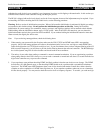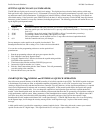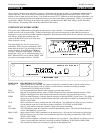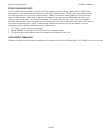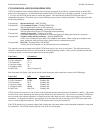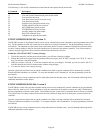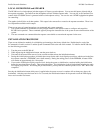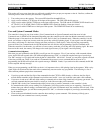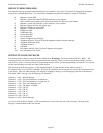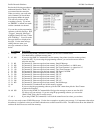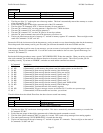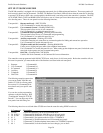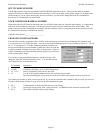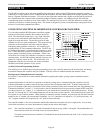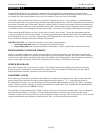
Pacific Research Solutions RI-300e User Manual
Page 32
SECTION 9 INITIAL SETTINGS
This section will cover some items that you will need to modify before you put your repeater on the air. But first, confirm the
following items to make sure that your controller is operational.
1. Turn on the power to the repeater. The system LED should be the only LED on.
2. Apply a carrier without a CTCSS tone on the input of the repeater. The COS LED should come on.
3. Apply a carrier with a 100 Hz CTCSS tone on the input of the repeater. The COS and the CTCSS/DCS LED should come
on. The SYS, AUX, DTMF, DIAL CLICK and HOOK LED’s should be flashing 4 times per second.
4. Apply a carrier with a DTMF tone on the input of the repeater. The DTMF LED should be on continuously.
User and System Command Modes
The controller is always in one of two modes: (User Command mode or System Command mode) but never in both.
Commands sent via DTMF will be interpreted depending upon the controller mode at the time that the command is received.
When the power is first turned on, the controller is locked, and is in the User Command mode. When the controller is in this
mode, you will hear a single tone courtesy each time you un-key with a full quieting signal. If your signal is not full quieting,
the courtesy will change to a dual tone courtesy each time you un-key: (Weak signal). After receiving the programming
password in the User command mode, the RI-300 unlocks and will switch to the programming (System Command) mode.
When the controller is in this mode, you will hear a 2-tone courtesy each time you un-key with a full quieting signal. Be aware
that even in this mode, the courtesy will change to the weak signal courtesy if your signal is not full quieting
Command acknowledgment
Each time you send commands to the RI-300, you will get one of 4 responses. First, if you send any valid command without
errors, the RI-300 will respond with a CW acknowledgment message “OK”, or a function complete message of your design.
The “OK” message is of low pitch and has the rhythm of “dah dah dah dah di dah”. Second, you may hear a speech read back
of the data you had sent. Third, if you send an S-Command with an error or a user command that has an error in it’s
programming, the RI-300 will respond with a speech message: “ERROR. Fourth, if you send an invalid command, the RI-300
will not respond with any message.
When you are programming your RI-300 over the air, it is important to have a full quieting signal at the repeater. With a noisy
signal, digits can be missed and the result of the command may not turn out the way you planned. The following is a list of
some common problems people have encountered:
• If you key up and send the first digit of the command before the CTCSS or DCS decodes a valid tone, the first digit is
missed and the remainder of the command received becomes invalid - worse yet, looks like some other valid command.
• If you move in and out of a RF null while sending a command such as when using a hand held, a digit may get missed. The
received command then becomes invalid or worse yet, looks like some other valid command.
• If the RI-300 is in the User Command mode while you are trying to send S-Commands, or the controller is in the
S-Command mode while you are sending User Commands, you will not get the results you are expecting. Note that if 5
minutes have past without sending a command while you are in the S-Command mode, the controller will lock itself. If the
time-out should happen, you will hear an unexpected CW “OK”, or a function complete of your design, automatically sent
by the controller.
• Listen to the speech feedback from the controller when sending a system command. This telemetry will help you to
determine that your command was correctly executed.



